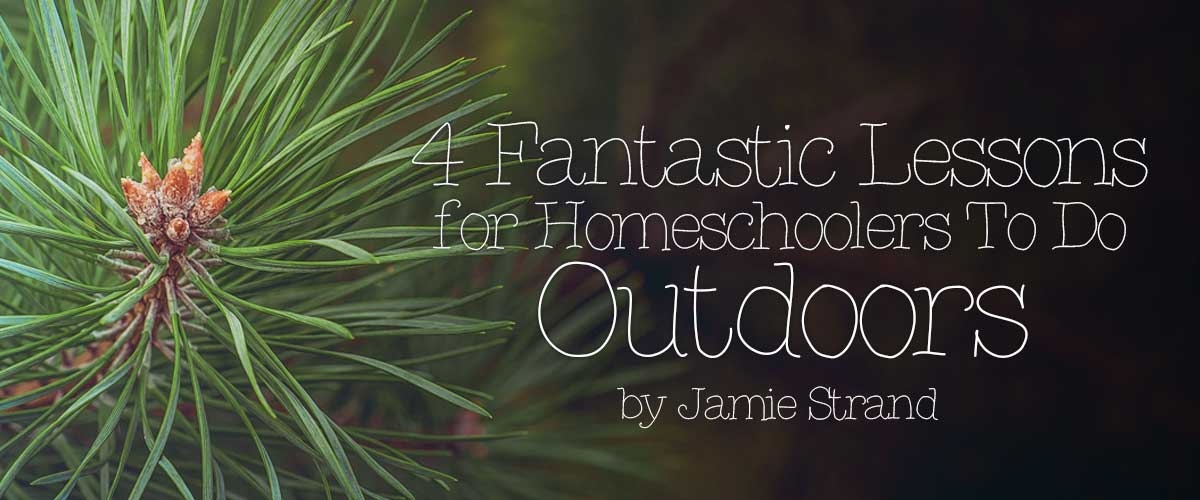All kids love to take their learning outside, and teachers and homeschool parents know just how valuable learning outdoors can be. With the right lessons, homeschoolers can learn a lot, especially about science, in a fun way outdoors. Here are some of my favorite lessons for homeschoolers to do outdoors:
1. Habitat Hunt
A fantastic lesson for homeschoolers in grades three through six to do outdoors, Habitat Hunt is a science-related activity that you can begin inside as a research project. You may have students research animals that are native to your area, or you could assign them a native animal. Then, begin your lessons on habitats, keeping in mind that proper habitats provide animals with food, water, shelter, and a safe place to raise their young.
Take children outdoors and have them investigate the area, from the perspective of their animal. Students need to determine whether the area is an appropriate place for them to stay, based on their animal’s needs. After considering the water source, food source, cover, and places to raise their young, students should be prepared to explain why they would or would not stay in the area and which other habitat elements they would like to see in the area. Once back inside, students can share what they have learned and write a more formal explanation for their final decisions.
2. Evergreens in Winter
Whether you live in a warm or cold climate, Evergreens in Winter is a fantastic lesson for homeschoolers to do outdoors. This science-related activity is all about the senses, as children will participate in experiences that use all five of their senses. All you need is a wooded area full of evergreens.
First, stop and listen near the trees. Are there any sounds of winter? Ask your students to compare the way the area looks, sounds, and smells now to the last time they visited. What sights and sounds are specific to winter? Then, search for pinecones, both on the ground, and on the branches. Note their characteristics and compare the cones from different species of trees.
Then, carefully observe the evergreen trees. Lie under them, looking up through the branches and discuss the patterns that are present. Explain why they make good shelters from wind, rain, and snow. Finally, look at the whorls of branches on pine, spruce, and fir trees. Estimate the trees’ ages by counting the whorls, because trees add new whorls of branches each year. Be sure to add two or three years for the first years of growth prior to the trees making whorls.
When you go back inside, have students journal about their experiences. They may draw pictures of branches, trees, pinecones, etc., and reflect about their learning. They also may write questions that they still have about their Evergreens in Winter lesson.
3. Paleo Dig
Developed by the National Park Service, Paleo Dig is a great science and art project mix. Start by taping together 12 popsicle sticks so that they make a canvas. Then, have your child draw a dinosaur on the popsicle stick canvas using a marker. Once their dinosaurs are drawn, you’ll dismantle the dinosaur canvas and bury/hide your child’s dinosaur “fossils” in a sandbox. If you don’t have a sandbox, you can hide the fossils under leaves, mulch, or other yard debris so that you don’t end up with a yard that looks like an archeological dig site!
Then, set your kids free to perform their dig. For an added challenge (and if you have enough participating kids) have them search for “fossils” that they didn’t draw—that way they won’t know exactly what they’re looking for. If you have younger kids, they can participate, too. I have a 7-year-old and a 3-year-old. I did this activity with them recently and hid dinosaur figurines left over from my older daughter’s birthday party for my 3-year-old to find. That way they both got to experience the excitement that comes with making big discoveries when digging for fossils.
4. Onomatopoeia Poetry
Walking outside creates all sorts of noises, if you take the time to listen. Take your children for a walk outside, and have them listen carefully to their footsteps. Encourage them to walk at various speeds and over a range of surfaces. They should record the sounds on index cards or in journals while outside, to help them remember all of the sounds when they write their onomatopoeia poetry.
Onomatopoeia is a word that is associated with a sound, such as “boom” or “sizzle.” Be sure students realize they are not making up nonsense words, but using actual words to write their poems. If they get stuck, there are tons of examples of onomatopoeia available online.
There are numerous benefits to learning outside, and I hope these fantastic lessons for homeschoolers to do outdoors inspire you to do even more teaching and learning in nature.





